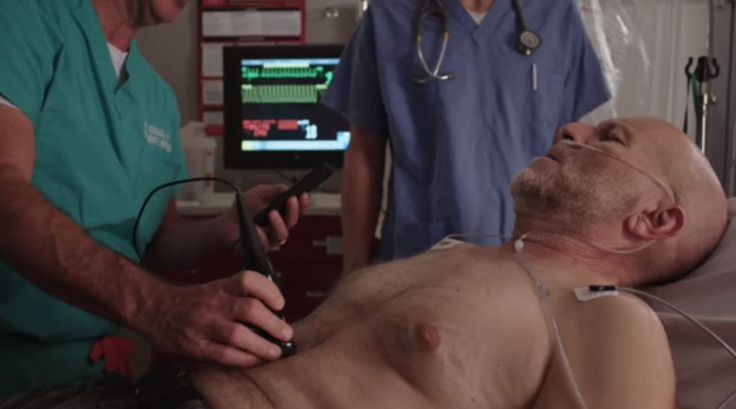Doctor Uses iPhone Ultrasound Device To Find Out He Has Cancer

Add an ultrasound to the list of medical technology you can now fit in your pocket.
These devices are the cumbersome machines doctors use to take images of a baby in its mother’s womb, among numerous other applications like watching the valves of the heart open and close. It’s sonar for your body — the machine sends out some sound waves and sees how they echo to figure out what the inside looks like. But now it could be possible for people to squeeze the signature cold gel of an ultrasound onto themselves and rub a small wand across a problem area, with the images being sent to a smartphone.
It worked for one doctor who had discomfort in his throat. The vascular surgeon saw a mass that turned out to be cancer.
“I felt something funny in my neck, connected the probe to my phone, did an ultrasound and there it was, my tumor,” Dr. John Martin said in a video from startup Butterfly Network. He is the chief medical officer of the company that created the miniature ultrasound technology.
The Butterfly iQ device looks a lot like an electric razor that connects to a smartphone through a wire. On the screen, doctors can toggle through different modes and adjust the gain on the ultrasound, which allows them to get better views of tissue based on how deep in the body it is.
“Medical imaging should be accessible to everyone on the planet.” Butterfly Network declares on its website.
That site includes videos that were taken with the Butterfly iQ device, including of a deep vein thrombosis, lung and heart movements and other bodily functions.
“The sooner we make a diagnosis, the sooner we can start treatment,” Martin said. “We’ve not invented an ultrasound machine, we’ve invented a time machine because we’ve hastened the time to diagnosis. And when you hasten the time to diagnosis, you hasten the time to treatment, the time to get better.”
If doctors can have the wand and a phone in their pocket, they have access to an ultrasound at any time, no matter where they are, and can see inside the body for a number of different purposes. Dr. Erik Deede, who is in emergency medicine at Metrowest Medical Center in Massachusetts and is one of the medical officials offering testimonials of the device on the Butterfly Network website, said the portable device works quickly.
“I would just carry it in my pocket and use it a lot more than I currently use my machine,” he said.
According to the MIT Technology Review, the small device has a semiconductor chip with thousands of small drums, rather than an ultrasound’s classic setup of a vibrating crystal creating the sound waves.
The device is projected to go on sale this year for about $2,000.
© Copyright IBTimes 2025. All rights reserved.




















